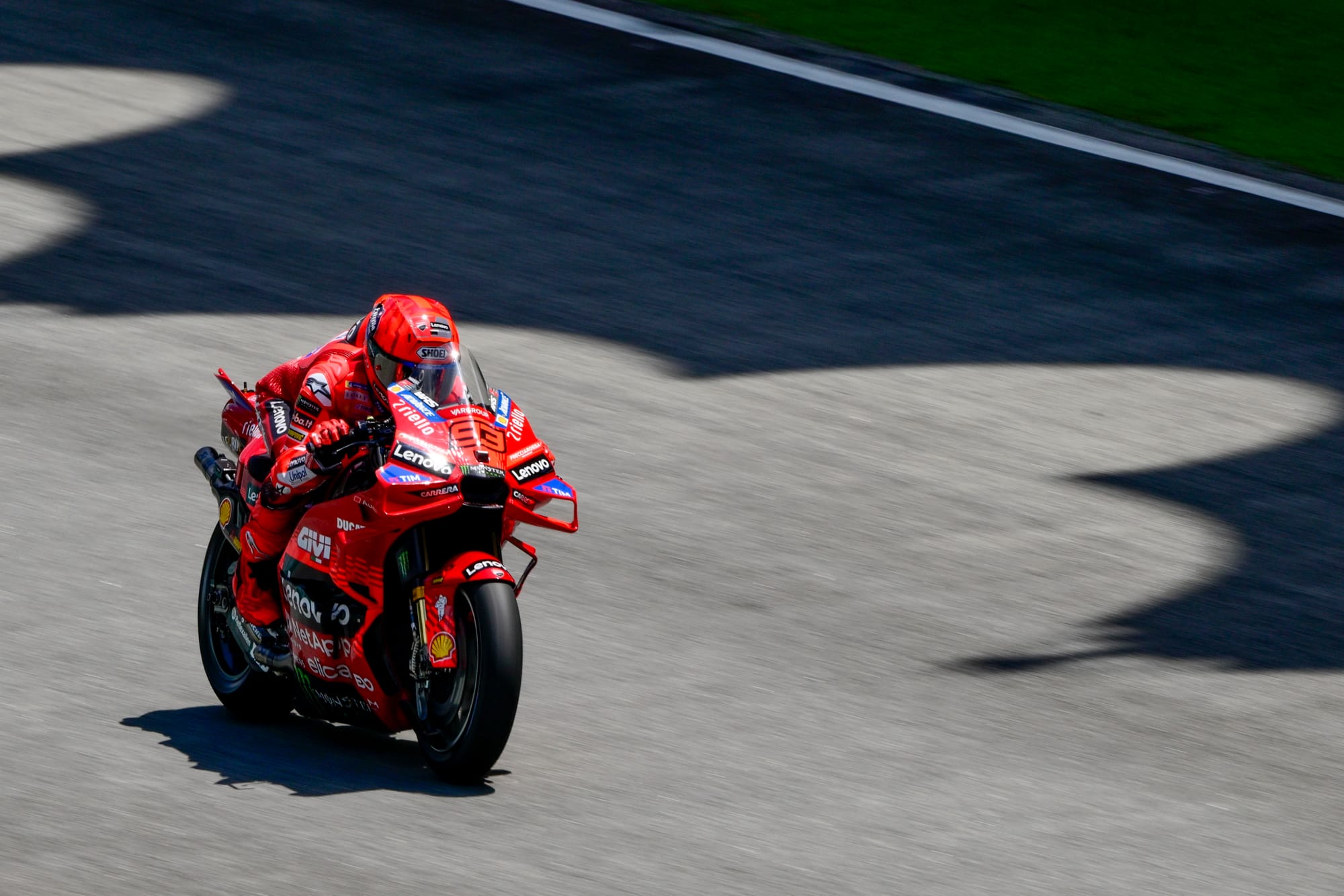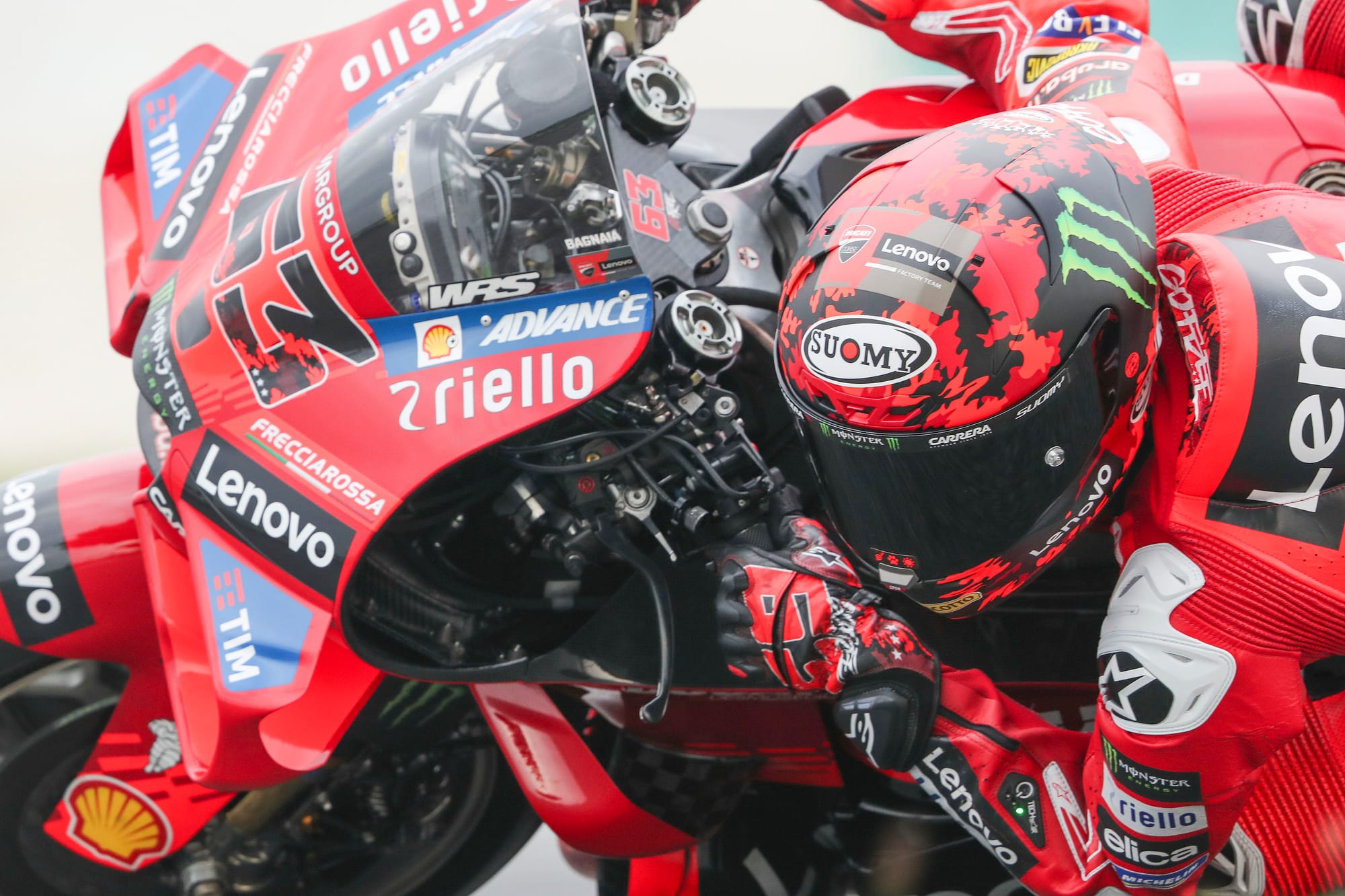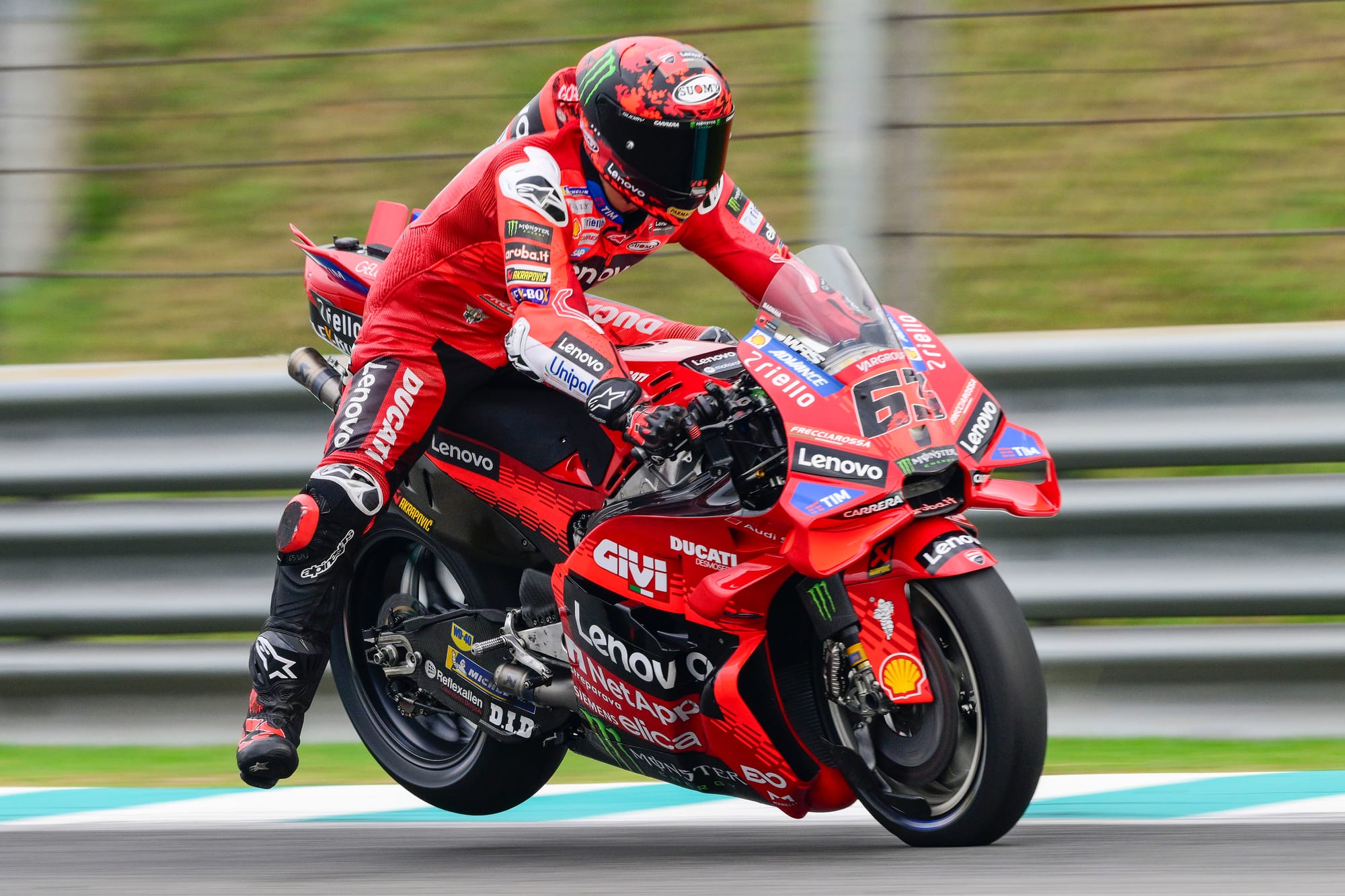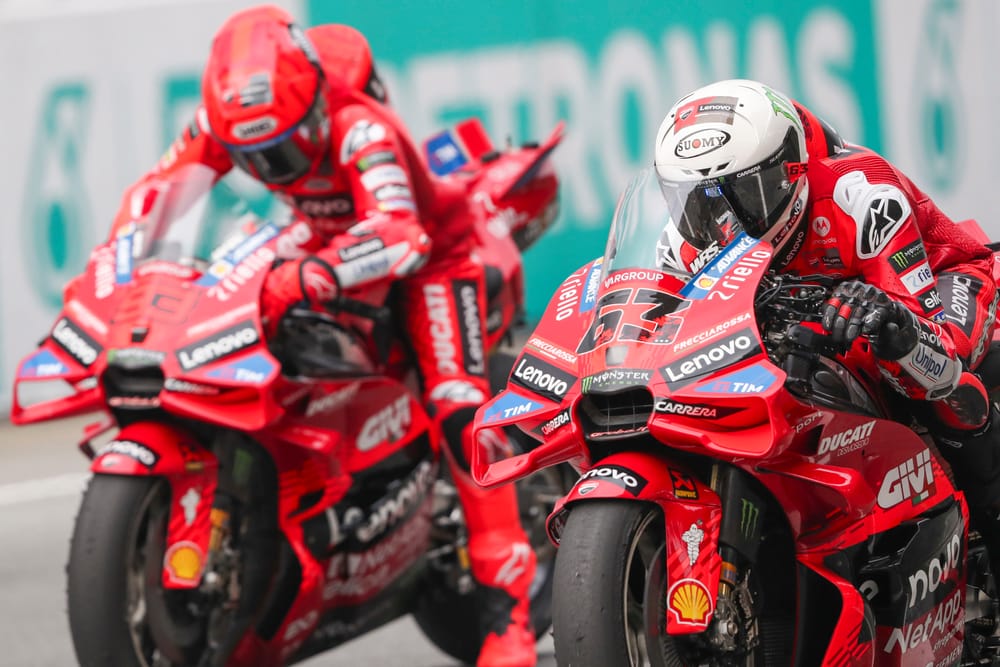Ducati faces a major question mark about its MotoGP engine, with factory riders Pecco Bagnaia and Marc Marquez undecided on which spec is more favourable.
Both Bagnaia and Marquez had crashes during the second day of the Sepang test - Bagnaia's a slow one at the final corner, Marquez's a more violent one (but also with no major repercussions) at the Turn 9 left-hander - but the bigger takeaway from their day was work comparing the available engine specs. These, in effect, are the newer 'GP25' version of the engine and the older 'GP24' unit.
The two riders say they are very aligned in their feedback - Bagnaia described this as being "incredible" and something he had never had to this extent with any other team-mate - but this has not yet given them a conclusive answer.
It is doubly complicated for Marquez, who is new to both engines as he campaigned an older-spec Ducati last year.
And it is a decision that, even more than any other year, cannot be taken lightly by Ducati because not only will it have to spend the full season with the chosen engine spec under the current homologation rules, but the 2026 engine freeze before a switch to new regulations in 2027 effectively makes it a two-year decision.
This isn't the case for the likes of Yamaha and Honda, MotoGP's 'Rank D' manufacturers and thus not bound by the freeze, but the idea of Ducati coming anywhere near 'Rank D' right now is a mathematical absurdity, so whichever engine spec will be raced in the Thailand season opener will be used for the next 40-plus rounds, too.

"We need to be super sure which is the direction," Marquez told MotoGP.com.
"We know that the '24 package is competitive. We need to be super sure - we need to see a clear positive aspect in the '25 - because when you homologate the engine it will be for two years. We need to understand well."
The engine is not the only aspect of the bike being worked on and evaluated - there's also a chassis and a new aero fairing that has earned a good review from Bagnaia, albeit with the caveat that he would like to see a 'hybrid' version combining the elements from this one and last year's version.
But both riders have made it clear that the engine is the most important part and the utmost priority given just four days of testing remain.
The pros and cons

"The power delivery is continuing to give a lot of great things to us," said Bagnaia of the 2025-spec engine. "It's very smooth, and we like that a lot. It's the first time that a new engine is that smooth in terms of acceleration, and that's great.
"But even if we have closed a bit the gap in terms of braking, it's still a bit far from the GP24. For tomorrow we have to close that gap, and try to understand in which way to do it."
Bagnaia went as far as to assess the decision as being "at the moment 50/50".
"Because the thing is... the GP24 is a fantastic base. And we all think that it still has some margin.

"The GP25 is already very fast and very good on the straight and acceleration - you can only do a top speed if the bike is exiting well from the corners, and this is the case, it's very smooth and you can manage a lot with the throttle and the acceleration.
"But in braking the GP24 was out of this world. We were doing something incredible on braking. And this is something difficult to reach at the moment with the '25 even if we close the gap."
On headline times, the GP24s have been a clear step ahead of the newer Ducatis so far at Sepang - but this isn't necessarily reflective of the actual performance levels.
However, according to Bagnaia, the braking performance where the 2024 engine excels is just more of a differentiator than the ride-height-device-aided acceleration, at least at Sepang.
"In this moment what we are gaining on acceleration is a bit less compared to what we are losing on braking."



